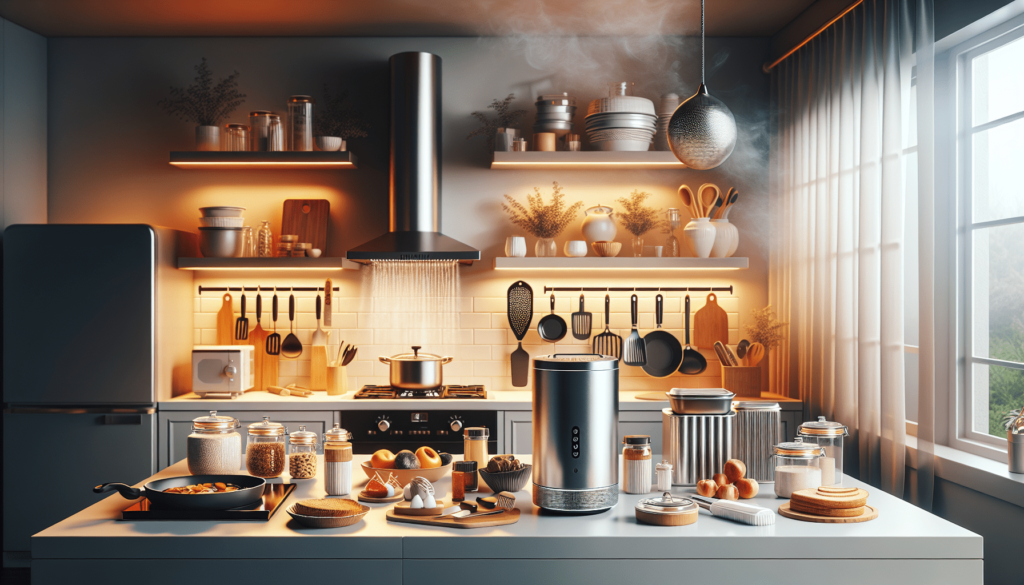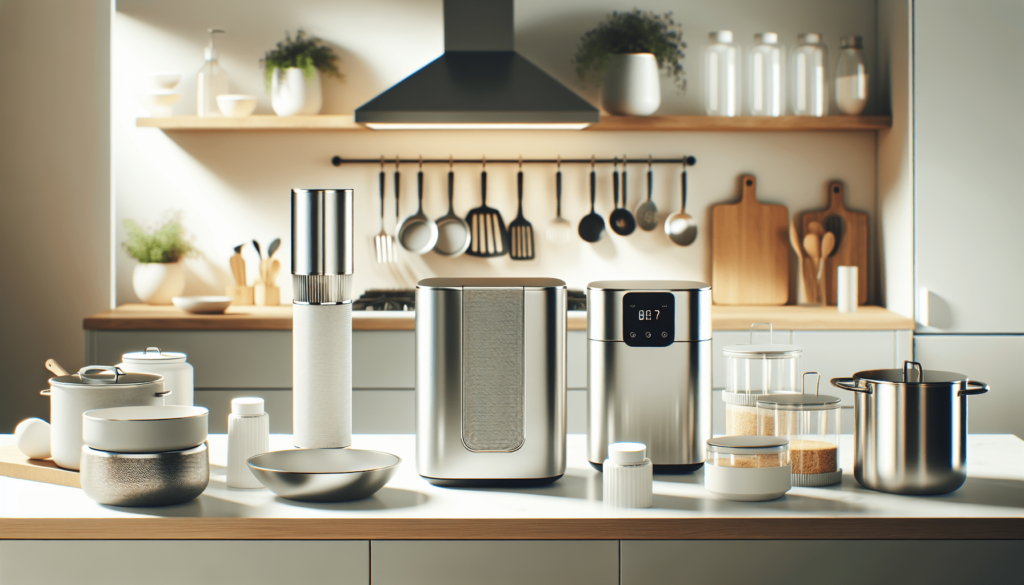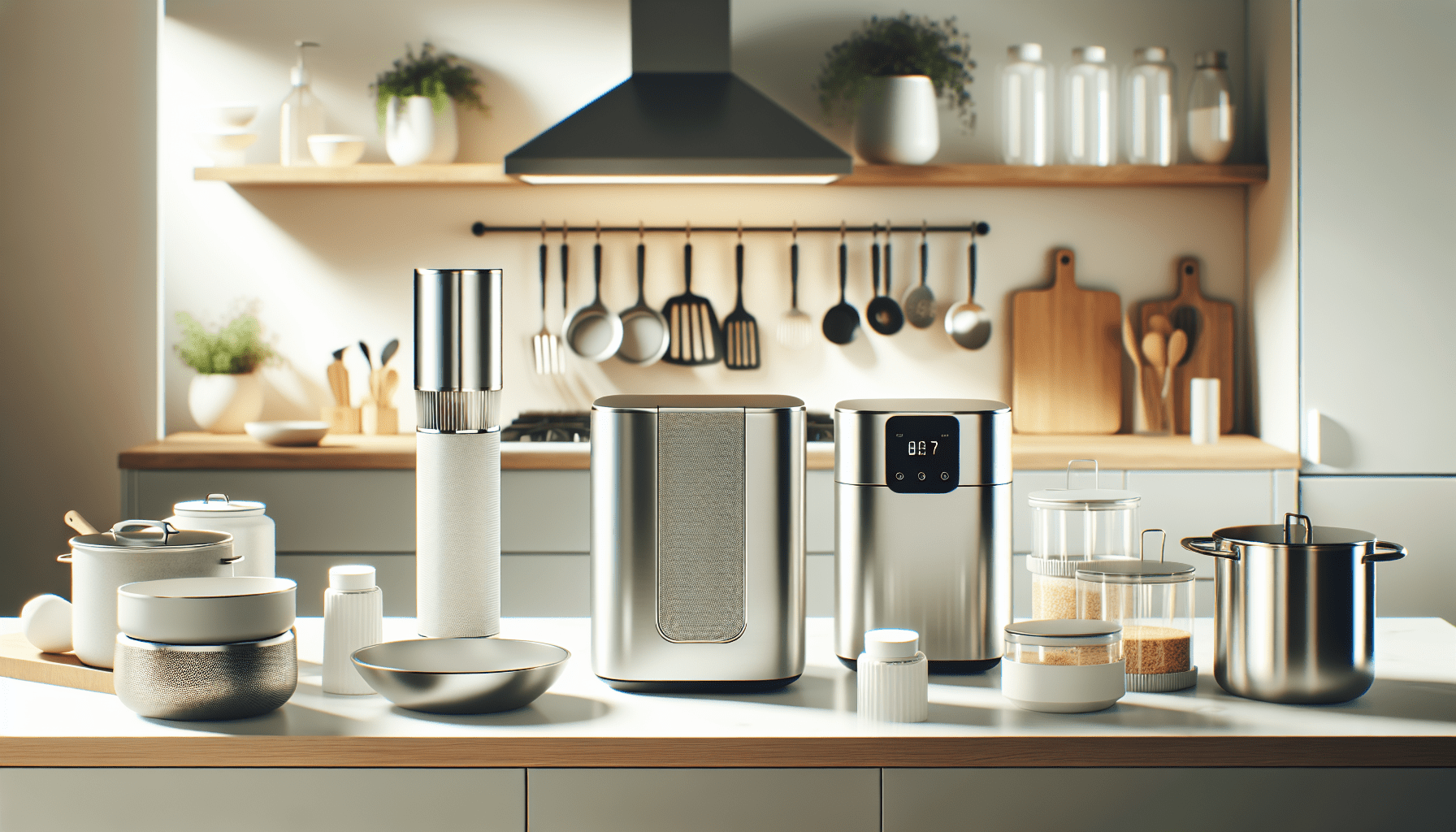Navigating a kitchen can be stressful when managing food allergies, but having the right tools can make all the difference. In “Top 5 Allergy-Friendly Kitchen Gadgets and Tools,” you’ll discover essential items designed to keep your space safe and your meals delicious. You’ll learn about gadgets that help prevent cross-contamination, make allergen-free cooking easier, and ensure your kitchen remains a secure, welcoming environment. Have you ever found yourself frantically searching for the right kitchen tool that won’t trigger allergies in your household? If so, you’re not alone! Navigating meal preparation with food allergies in mind can be pretty daunting, but don’t worry—we’ve got some great news. There are specialized kitchen gadgets and tools designed specifically to make your life easier!
In this article, we’re diving into the top 5 allergy-friendly kitchen gadgets and tools. Whether you’re dealing with gluten, dairy, nuts, or other allergens, we’ll walk you through the must-have items to help you create delicious meals with peace of mind. So, let’s get started on making your kitchen the ultimate allergy-safe zone!
1. Allergen-Specific Cutting Boards
Cutting boards are essential in any kitchen, but cross-contamination is a real concern when dealing with food allergies. Normal cutting boards can retain residues from various foods, leading to accidental exposure.
Why Choose Allergen-Specific Cutting Boards?
Allergen-specific cutting boards help mitigate the risk of cross-contamination by allowing you to keep different food groups separately. These cutting boards are typically color-coded, making it easy to allocate specific boards for specific allergens.
Pros:
- Reduces risk of cross-contamination
- Color-coded for convenience
- Often dishwasher safe, which ensures thorough cleaning
Cons:
- Takes up more storage space
- Slightly more expensive than regular cutting boards
How to Use Allergen-Specific Cutting Boards
The trick is simple: assign a different color to each type of food you’re dealing with. For example:
- Red for meats
- Green for fruits and vegetables
- Blue for seafood
- Yellow for gluten-free foods
By sticking to this color code, you significantly reduce the risk of cross-contact, keeping food allergies at bay in your kitchen.
| Color | Use Case | Allergen Concern |
|---|---|---|
| Red | Meats | Meat residue |
| Green | Fruits and Vegetables | Pesticides, dirt |
| Blue | Seafood | Fish allergens |
| Yellow | Gluten-Free Foods | Gluten cross-contamination |
2. Food Processors with Sealed Bowls
Food processors are fantastic for chopping, grinding, and mixing. However, traditional models can harbor traces of food residues, which is not ideal when managing allergies.
Why Opt for Sealed Bowl Food Processors?
Sealed bowl food processors are designed to minimize the chances of food particles getting trapped in the nooks and crannies of the appliance. They are easier to clean thoroughly, which makes them a great tool for an allergy-conscious kitchen.
Pros:
- Ensures minimal residue buildup
- Easy to clean completely
- Efficient in handling various food types
Cons:
- Slightly more expensive than the standard models
- Can be bulkier
Cleaning Tips for Food Processors
Taking a few extra steps to clean your food processor can make all the difference:
- Disassemble the components and soak them in warm, soapy water.
- Use a small brush to get into the tiny crevices and remove any trapped particles.
- Dry each component thoroughly before reassembling it.

3. Silicone Baking Mats
When it comes to baking, traditional baking sheets and parchment paper can be a hub for allergens. Silicone baking mats offer a reusable, non-stick alternative that’s super easy to clean.
Benefits of Silicone Baking Mats
Silicone baking mats eliminate the need for butter or oil to prevent sticking, thereby reducing the risk of introducing unwanted allergens into your recipes. They are also highly durable and can withstand high oven temperatures.
Pros:
- Non-stick and reusable
- Easy to clean
- Free from common allergens like latex
Cons:
- Can be pricey upfront
- Requires specific storage to avoid damage
How to Use and Maintain Silicone Baking Mats
Using silicone baking mats is a breeze:
- Place the mat on your baking sheet.
- Arrange your items on top and bake as you normally would.
- After use, wash the mat with warm, soapy water or place it in the dishwasher for a thorough clean.
Common Uses for Silicone Baking Mats
Silicone baking mats are versatile and can be used for a variety of baking needs:
- Baking cookies and pastries
- Roasting vegetables
- Making candy and chocolate treats
4. High-Efficiency Air Purifiers
An often overlooked, but critically important kitchen gadget for allergy sufferers is an air purifier. Food allergens can become airborne during cooking and baking, causing sneezing, itching, and other allergic reactions.
Benefits of High-Efficiency Air Purifiers
Air purifiers with HEPA filters can capture 99.97% of airborne particles like dust, pollen, mold, bacteria, and food allergens. Investing in a high-efficiency air purifier ensures your kitchen air remains clean and safe.
Pros:
- Removes airborne allergens
- Improves overall indoor air quality
- Can reduce odors from cooking
Cons:
- Requires regular filter replacements
- Might be noisy, depending on the model
What to Look for in an Air Purifier
When shopping for an air purifier for the kitchen, consider the following factors:
- HEPA Filter: Ensure the unit has a true HEPA filter.
- CADR Rating: Look for a high Clean Air Delivery Rate (CADR) to ensure effective cleaning.
- Noise Levels: Select a quieter model to maintain a peaceful kitchen environment.

5. Dedicated Allergen-Free Utensils
Different utensils used for different foods can go a long way in preventing cross-contamination. Keeping a set of dedicated utensils for allergen-free cooking is crucial.
Key Features of Dedicated Allergen-Free Utensils
Invest in distinctively colored or labeled utensils for allergen-specific cooking. Materials like stainless steel or silicone are preferable as they can be easily sterilized.
Pros:
- Reduces risk of cross-contamination
- Available in various materials
- Can be easily stored
Cons:
- Increases the number of utensils in your kitchen
- Requires careful labeling and storage
How to Manage Allergen-Free Utensils
- Label: Clearly label utensils (stickers, engravings, etc.) for easy identification.
- Storage: Store allergen-free utensils separately to avoid mix-ups.
- Cleaning: Clean and sterilize utensils immediately after use to prevent accidental contamination.
Types of Dedicated Allergen-Free Utensils
Various utensils can be designated for allergen-specific tasks, such as:
- Knives
- Mixing spoons
- Spatulas
- Measuring cups and spoons
Conclusion
These top 5 allergy-friendly kitchen gadgets and tools are not just beneficial but essential for anyone managing food allergies. From allergen-specific cutting boards and sealed bowl food processors to silicone baking mats, air purifiers, and dedicated utensils, each of these items plays a significant role in creating a safer cooking environment.
Taking the time to incorporate these tools into your kitchen routine can significantly reduce the risk of cross-contamination and make cooking a more enjoyable and stress-free experience. So go ahead, revamp your kitchen with these fantastic tools, and cook with confidence knowing that you’re taking the necessary steps to keep everyone safe and healthy. Happy cooking!
